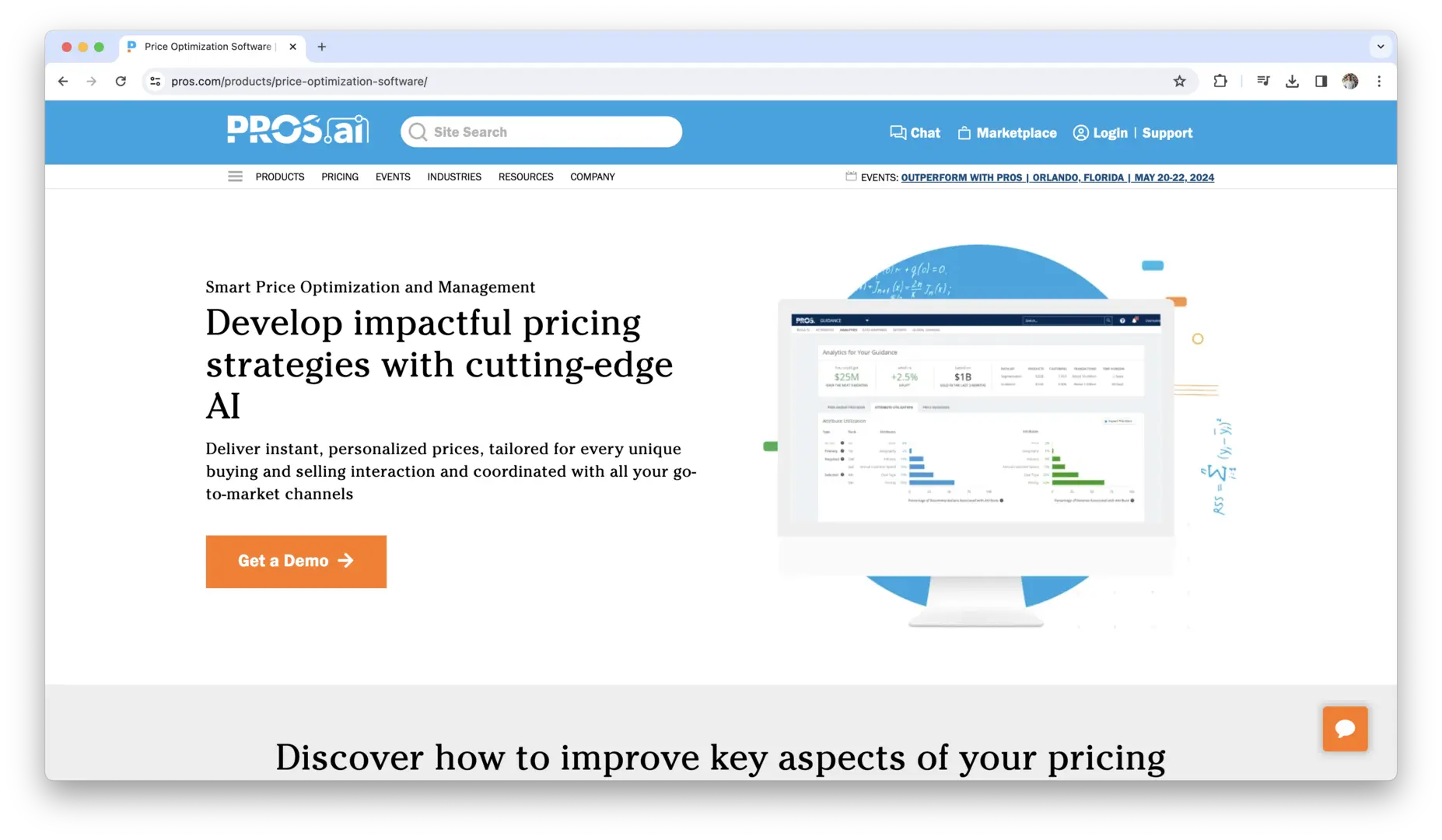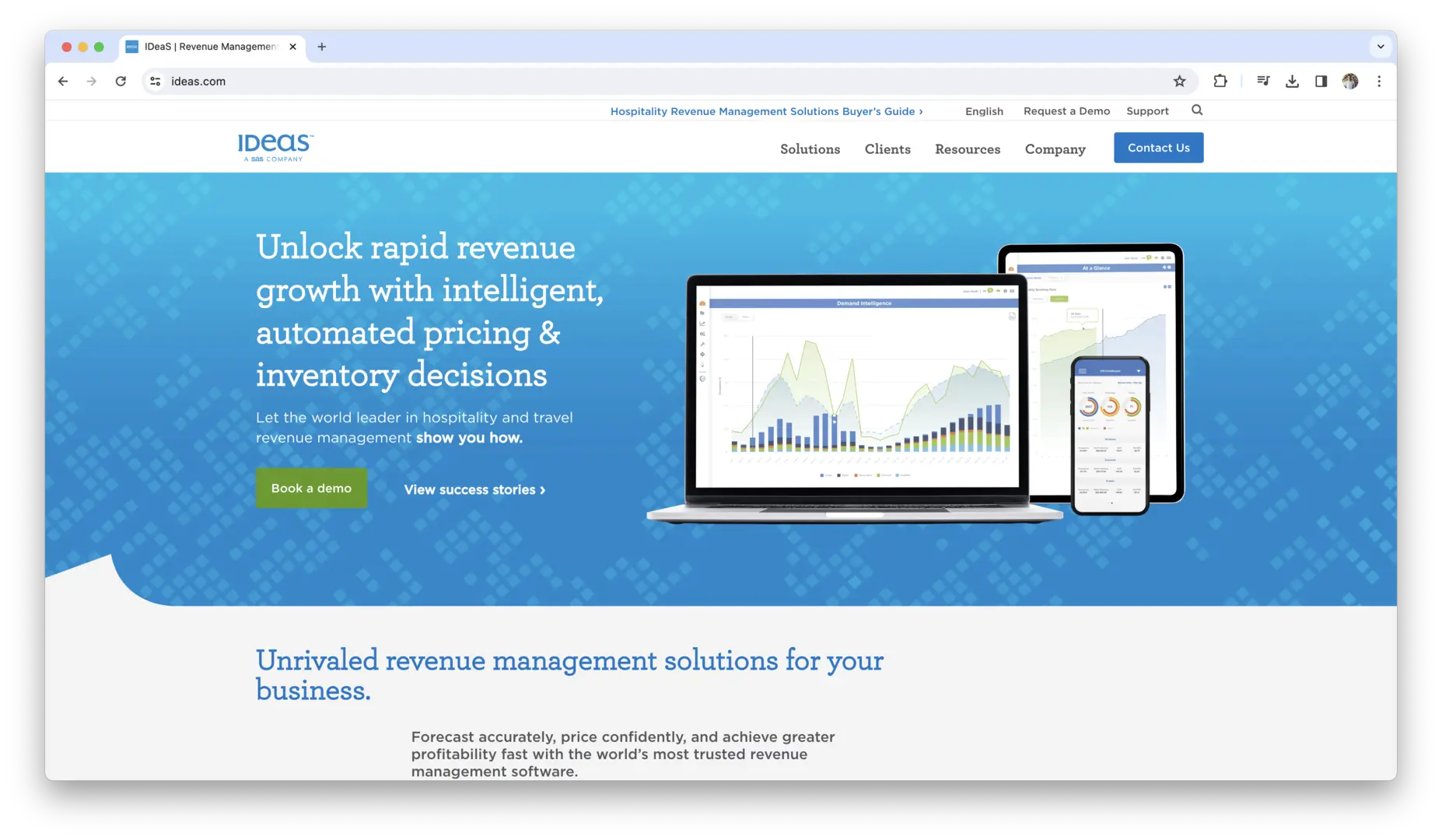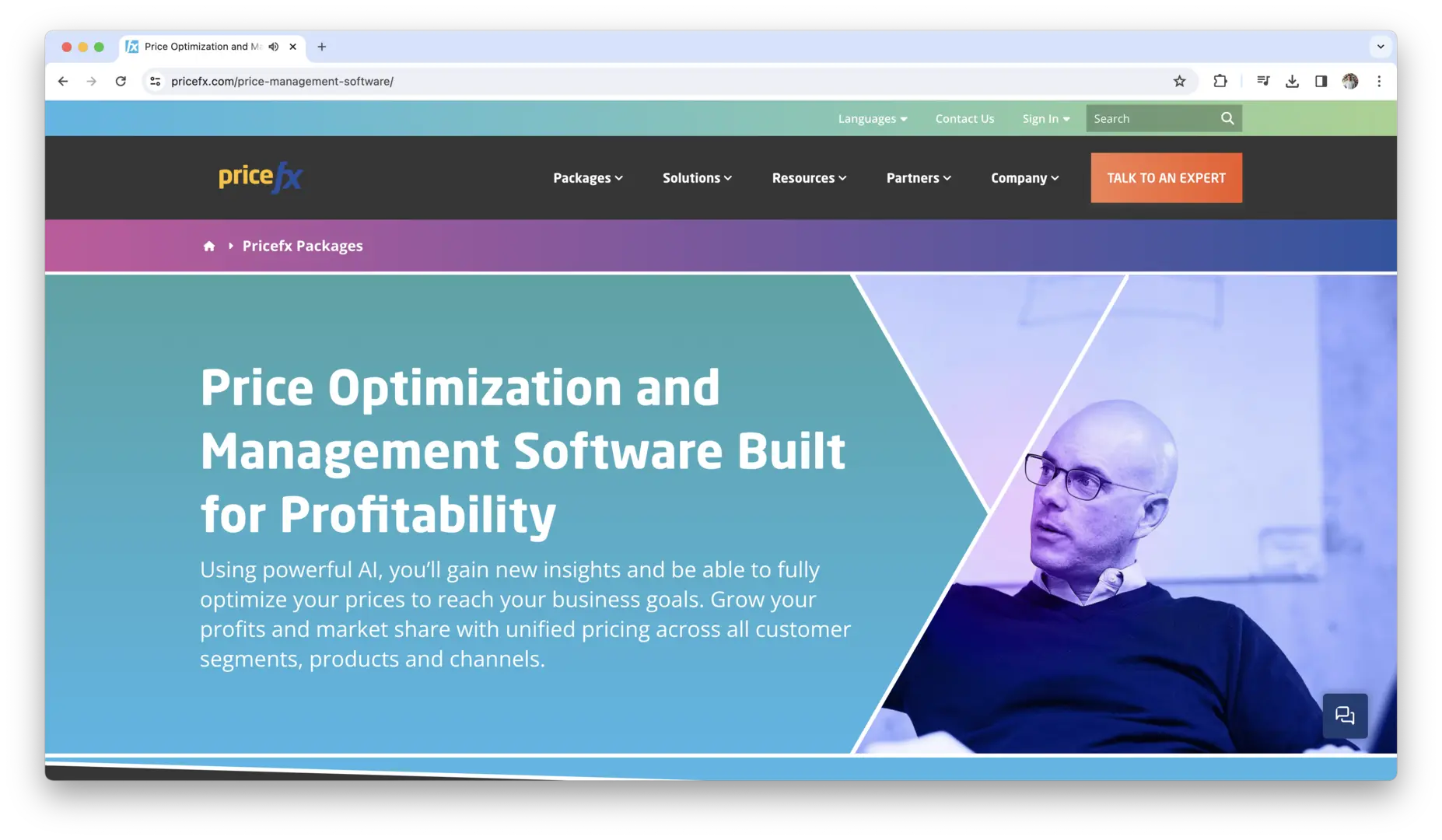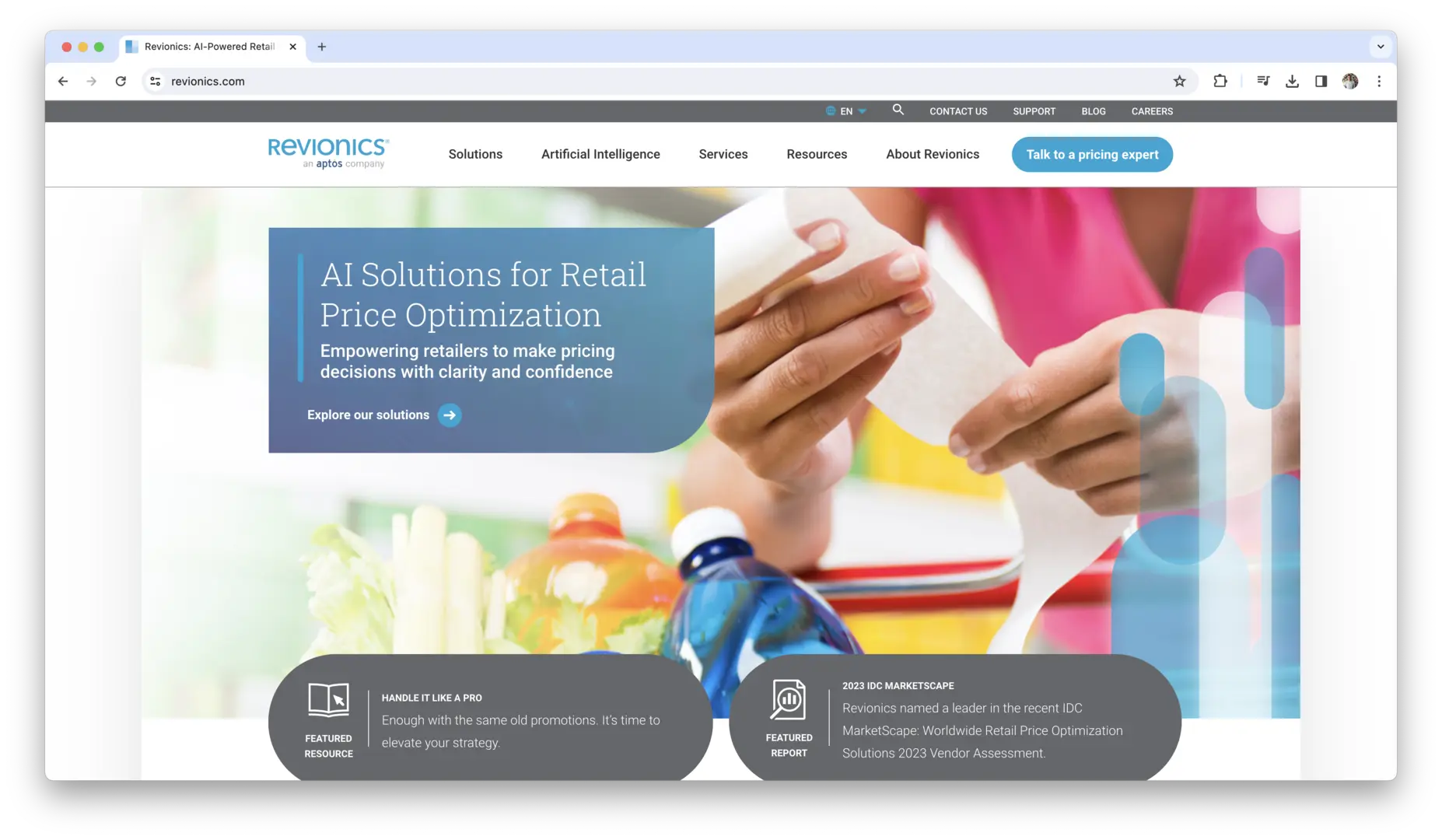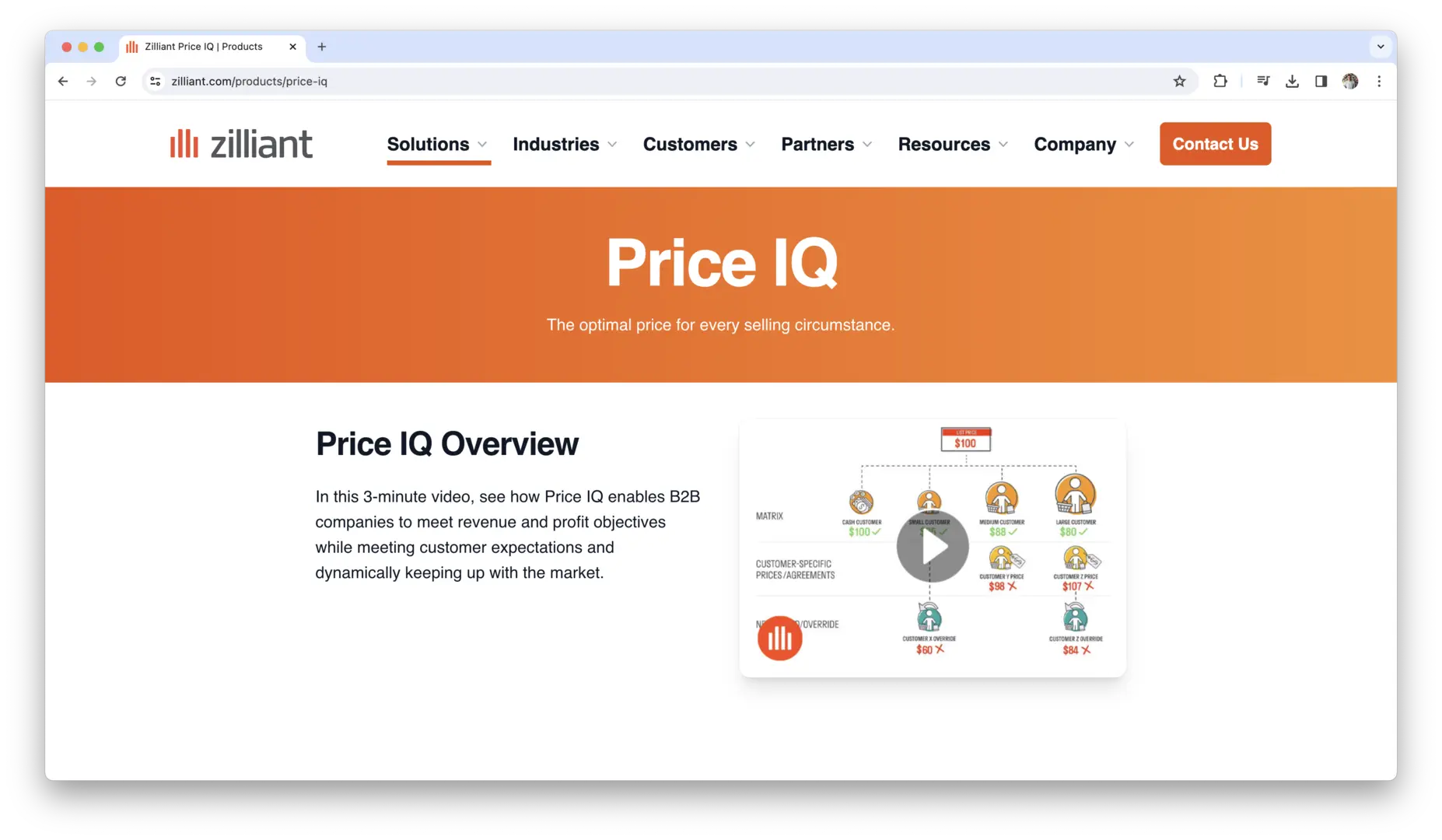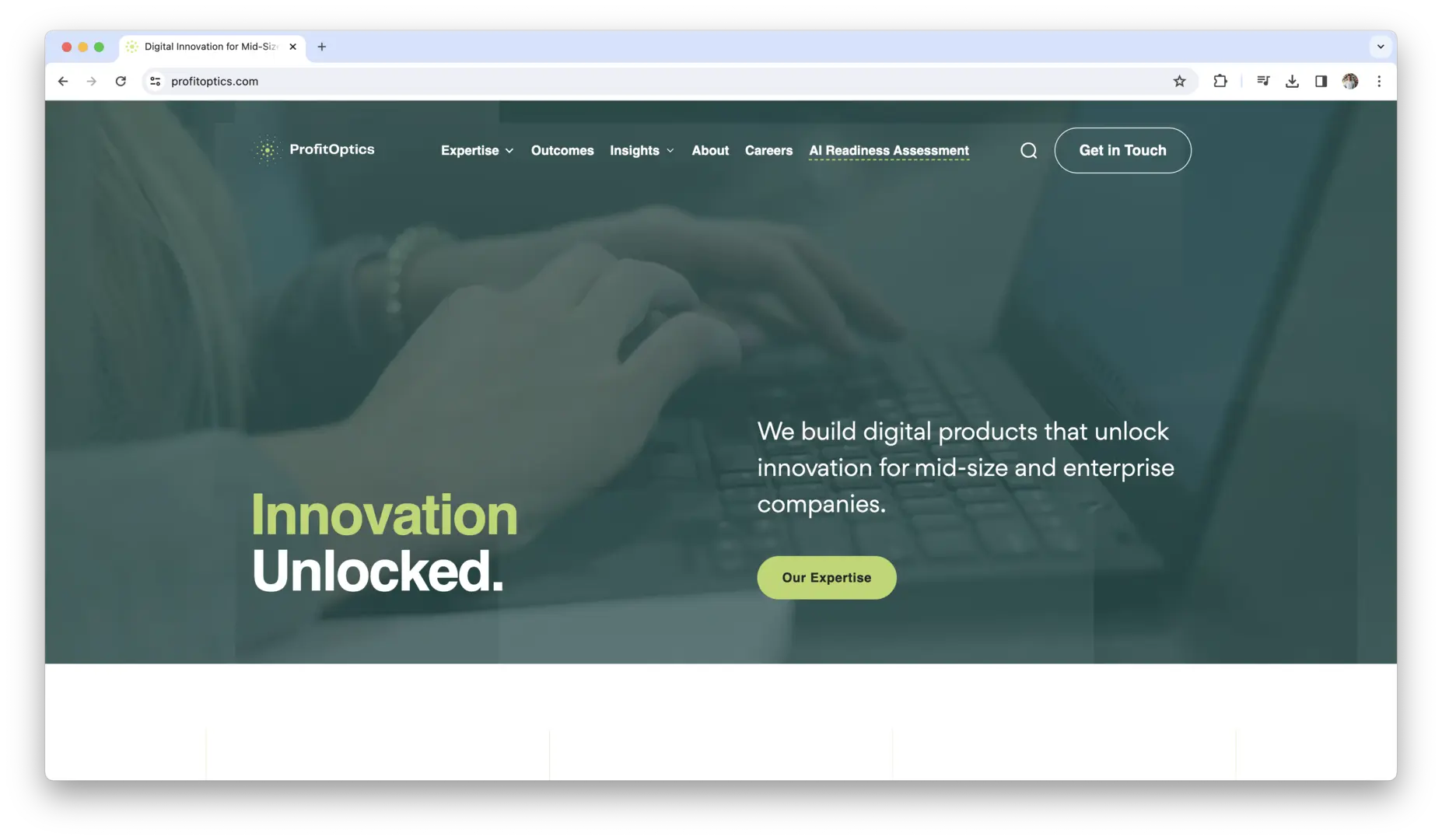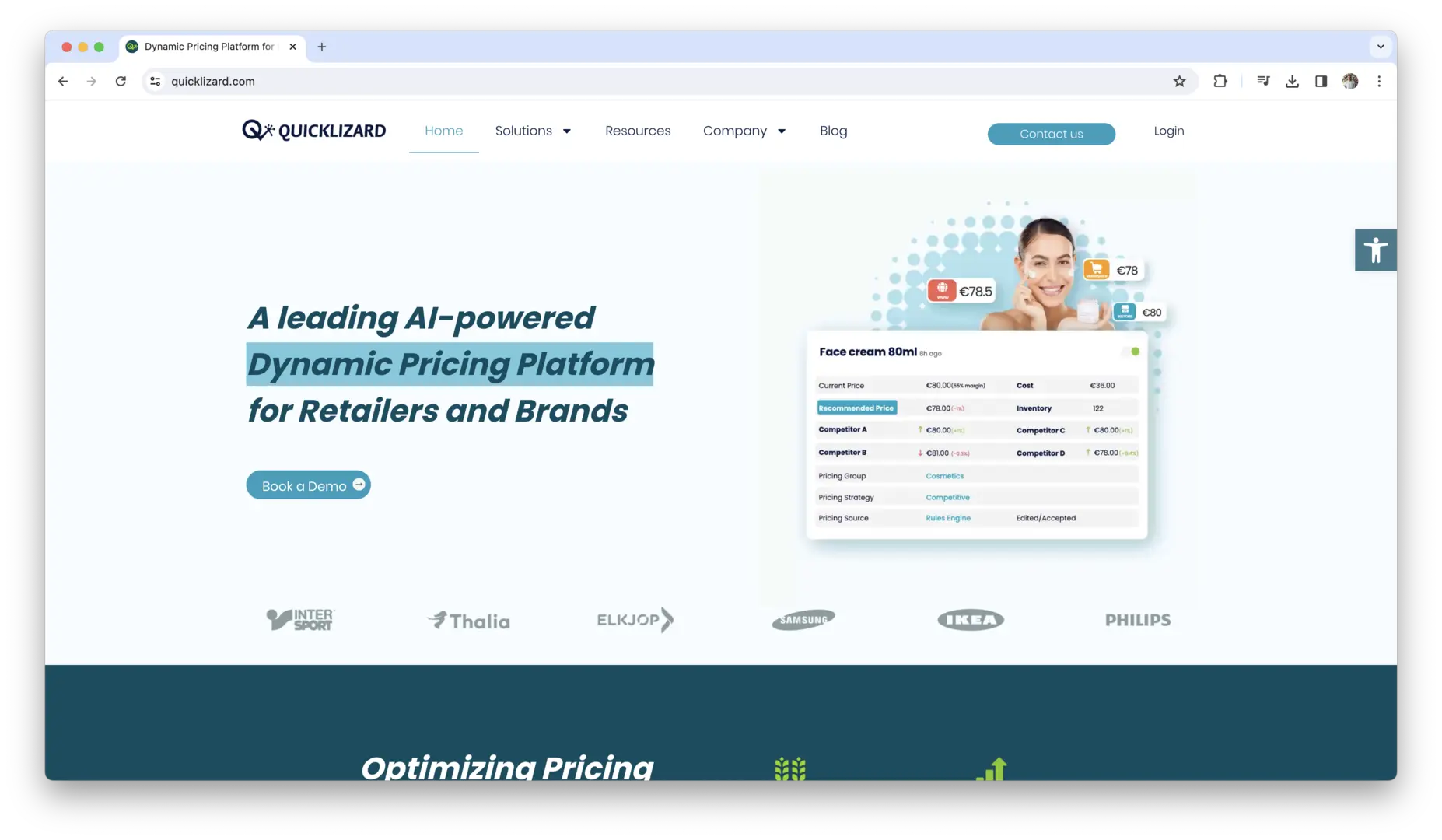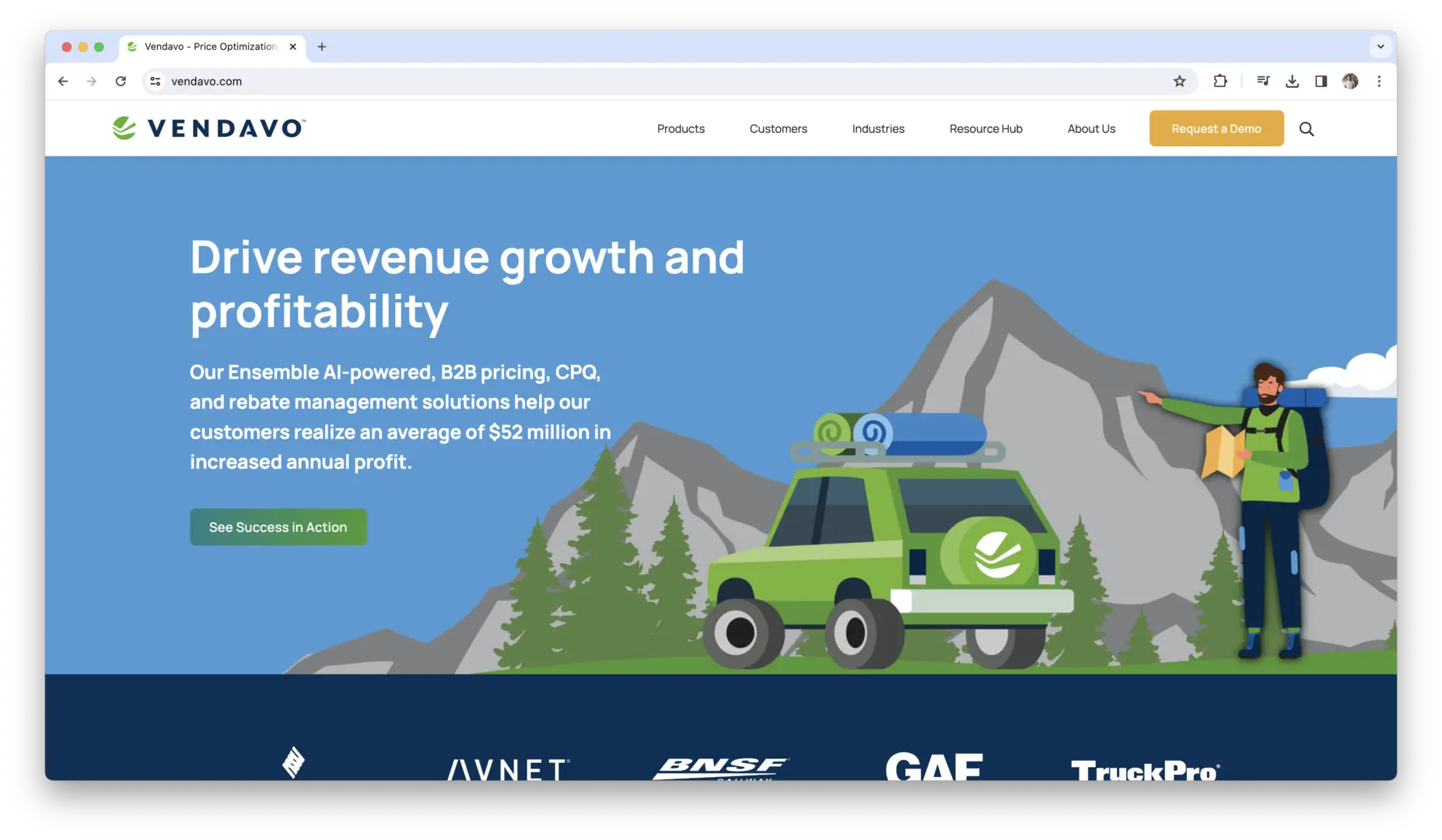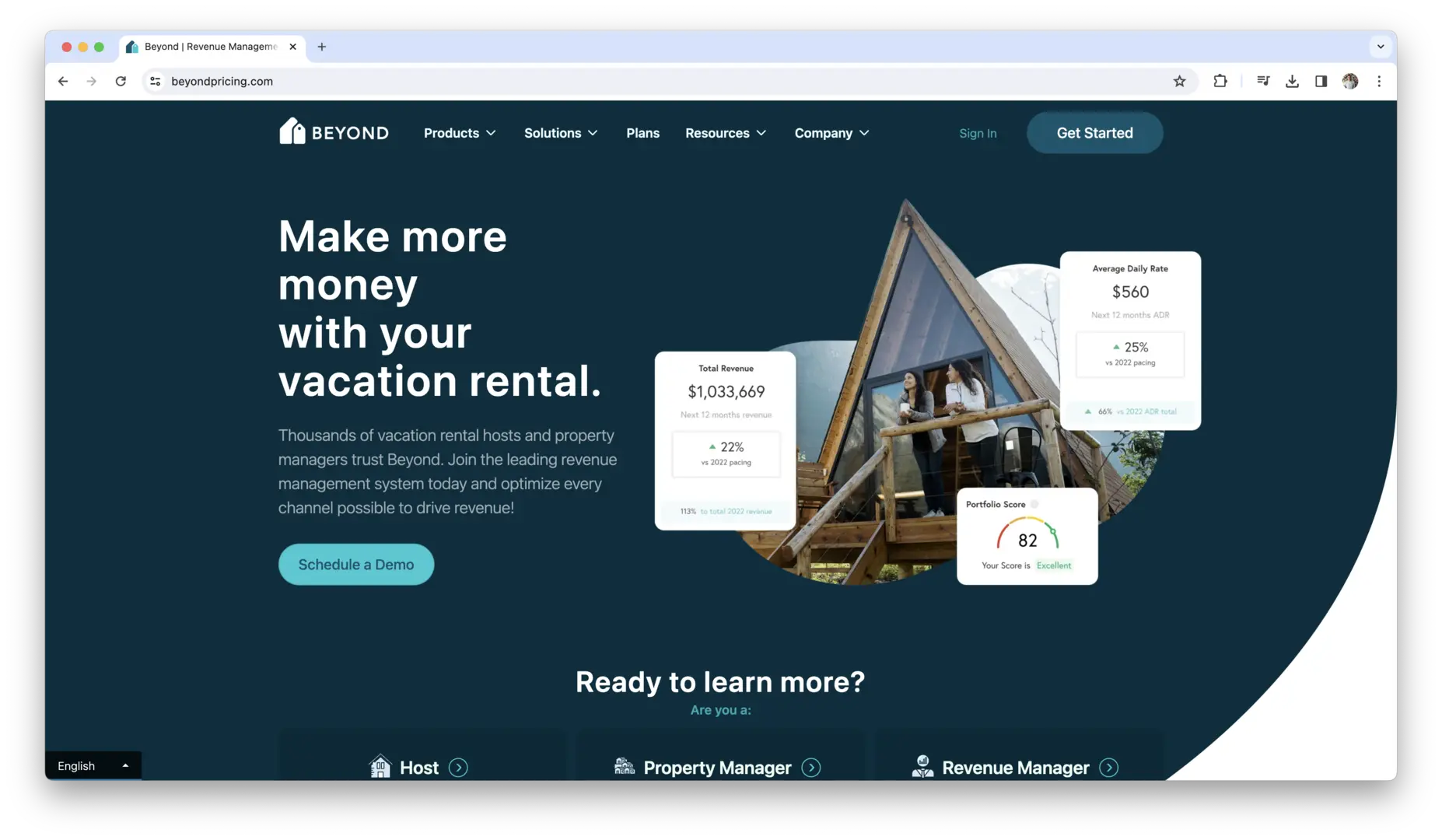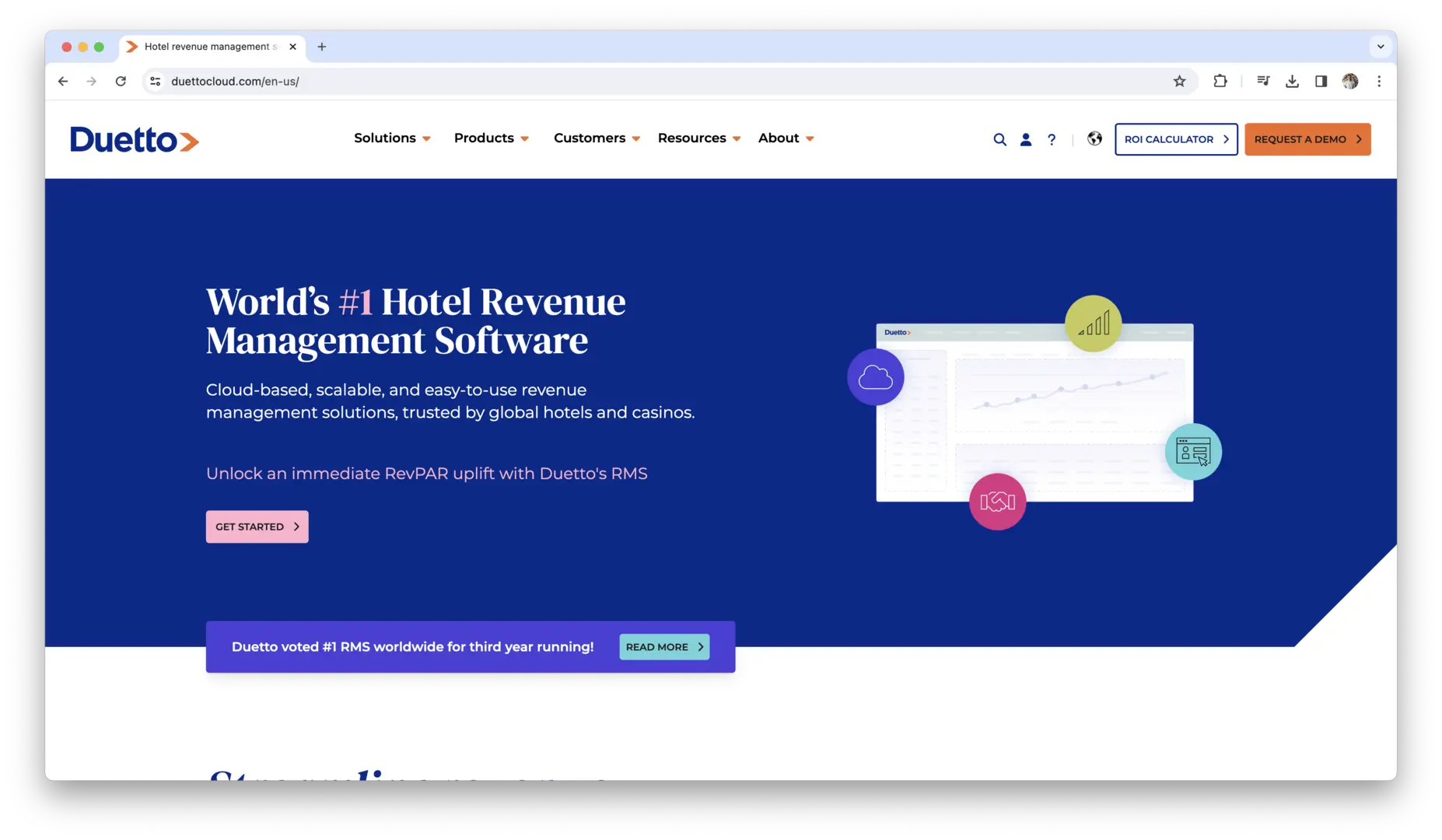Have you ever wondered how businesses effectively set prices, manage inventory, and optimize revenue to stay competitive and profitable in today’s fast-paced market? The answer lies in revenue management software. In this guide, we’ll explore the world of revenue management software, from understanding its fundamental concepts to uncovering the top solutions available in the market. Revenue management software empowers businesses across industries to make data-driven decisions, adapt to market dynamics, and maximize revenue potential.
Whether you’re a hotel chain looking to optimize room rates, an e-commerce retailer seeking to forecast demand accurately, or a manufacturing company aiming to streamline pricing strategies, revenue management software offers a range of features and capabilities to help you achieve your goals. Join us on this journey as we dive deep into the realm of revenue management software and discover how it can drive growth, enhance profitability, and give your business a competitive edge in today’s dynamic marketplace.
What is Revenue Management?
Revenue management is a strategic approach to maximizing revenue and profitability by optimizing pricing, inventory, and distribution channels. It involves analyzing market dynamics, customer behavior, and competitive landscape to make data-driven decisions that drive revenue growth. At its core, revenue management aims to match supply and demand effectively, ensuring that businesses can sell the right product to the right customer at the right price and time.
Importance of Revenue Management
Revenue management is crucial for businesses across various industries for the following reasons:
- Maximizes Revenue: Revenue management enables businesses to set optimal prices for their products or services based on demand, competition, and other factors, maximizing revenue potential.
- Enhances Profitability: By optimizing pricing strategies, inventory management, and distribution channels, revenue management helps businesses improve profit margins and overall profitability.
- Improves Resource Allocation: Effective revenue management allows businesses to allocate resources such as inventory, production capacity, and marketing budgets more efficiently, reducing waste and maximizing return on investment (ROI).
- Drives Competitive Advantage: Businesses that implement revenue management strategies gain a competitive edge by staying ahead of market trends, adapting to changing customer preferences, and optimizing pricing to attract and retain customers.
What is Revenue Management Software?
Revenue management software is a technology solution designed to automate and streamline revenue management processes, enabling businesses to make informed decisions and maximize revenue potential. These software tools leverage advanced algorithms, data analytics, and machine learning to analyze market trends, forecast demand, optimize pricing, and allocate resources effectively. Revenue management software empowers businesses to adapt to market changes quickly, capitalize on revenue opportunities, and stay competitive in today’s dynamic business landscape.
Role of Revenue Management Software in Businesses
Revenue management software plays a crucial role in businesses by:
- Providing Data-Driven Insights: Revenue management software aggregates and analyzes vast amounts of data to provide actionable insights into market trends, customer behavior, and competitor strategies, enabling businesses to make informed decisions.
- Optimizing Pricing Strategies: Revenue management software helps businesses set optimal prices for their products or services based on demand, seasonality, competitor pricing, and other factors, maximizing revenue potential and profit margins.
- Forecasting Demand Accurately: By leveraging historical data, statistical models, and machine learning algorithms, revenue management software predicts future demand for products or services with precision, allowing businesses to adjust inventory levels, production schedules, and pricing strategies accordingly.
- Streamlining Operations: Revenue management software automates and streamlines revenue management processes such as pricing, inventory management, and distribution channel optimization, reducing manual effort and improving operational efficiency.
Overall, revenue management software empowers businesses to optimize revenue, enhance profitability, and gain a competitive advantage in today’s complex and dynamic marketplace.
Understanding Revenue Management Software
To truly grasp the value and potential of revenue management software, it’s crucial to delve into its core features, different types available, and the multitude of benefits it offers to businesses of all sizes and industries.
Core Features and Functionality
Revenue management software typically boasts a robust array of features designed to empower businesses with actionable insights and streamlined operations. These features often include:
- Dynamic Pricing: This feature allows businesses to adjust prices in real-time based on various factors such as demand, competitor pricing, time of day, or even weather conditions. By dynamically setting prices, businesses can maximize revenue and adapt to market fluctuations swiftly.
- Demand Forecasting: Forecasting demand accurately is essential for optimizing inventory levels, managing resources efficiently, and ensuring customer satisfaction. Revenue management software utilizes historical data, market trends, and advanced algorithms to predict future demand with precision, helping businesses make informed decisions and stay ahead of the curve.
- Inventory Optimization: Managing inventory effectively is crucial for minimizing carrying costs, reducing stockouts, and maximizing sales opportunities. Revenue management software offers sophisticated inventory optimization tools that analyze demand patterns, lead times, and supply chain dynamics to ensure optimal inventory levels at all times.
- Channel Management: In today’s omnichannel retail landscape, businesses must effectively manage multiple sales channels to reach customers wherever they are. Revenue management software provides comprehensive channel management capabilities, allowing businesses to distribute their products or services across online marketplaces, e-commerce platforms, brick-and-mortar stores, and more, while maintaining consistent pricing and inventory levels.
Types of Revenue Management Software
Revenue management software comes in various forms, each tailored to address specific business needs and industry requirements. Some of the most common types include:
- Pricing Optimization Software: This type of software focuses primarily on optimizing pricing strategies to maximize revenue and profitability. By analyzing market trends, competitor pricing, and customer behavior, pricing optimization software enables businesses to set optimal prices for their products or services in real-time.
- Demand Forecasting Tools: Demand forecasting tools leverage historical data, statistical models, and machine learning algorithms to predict future demand for products or services accurately. By forecasting demand with precision, businesses can adjust their inventory levels, production schedules, and pricing strategies accordingly, minimizing stockouts and maximizing sales opportunities.
- Inventory Management Systems: Inventory management systems play a crucial role in optimizing inventory levels, reducing carrying costs, and improving operational efficiency. These systems track inventory in real-time, automate reorder processes, and provide insights into inventory turnover rates, helping businesses optimize their inventory management practices and ensure product availability.
- Channel Management Solutions: Channel management solutions enable businesses to manage and optimize their distribution channels effectively. From online marketplaces and e-commerce platforms to brick-and-mortar stores and wholesale distributors, channel management solutions provide centralized control over sales channels, ensuring consistent pricing, inventory management, and brand representation across all channels.
Benefits of Using Revenue Management Software
The adoption of revenue management software offers a multitude of benefits to businesses across various industries. Some of the key benefits include:
- Maximized Revenue: By optimizing pricing strategies, forecasting demand accurately, and managing inventory effectively, revenue management software enables businesses to maximize revenue and profitability.
- Improved Decision-Making: Revenue management software provides businesses with actionable insights and real-time data, empowering them to make informed decisions quickly. Whether it’s adjusting prices, allocating resources, or launching promotions, businesses can rely on data-driven insights to drive growth and success.
- Enhanced Competitive Advantage: In today’s fast-paced business environment, staying ahead of the competition is crucial for long-term success. Revenue management software equips businesses with the tools and capabilities needed to outperform competitors, adapt to market changes, and capitalize on emerging opportunities, giving them a significant competitive advantage.
- Increased Operational Efficiency: By automating manual processes, optimizing resource allocation, and streamlining operations, revenue management software helps businesses improve operational efficiency and reduce overhead costs. From inventory management to pricing optimization, businesses can automate repetitive tasks and focus on strategic initiatives that drive growth and innovation.
In essence, revenue management software serves as a catalyst for growth and success, empowering businesses to unlock their full potential, drive revenue growth, and stay ahead of the competition in today’s dynamic marketplace.
Top Revenue Management Software Solutions
When it comes to revenue management software, there are several leading solutions available in the market, each offering unique features and capabilities to help businesses optimize their revenue strategies. Let’s delve into some of the top revenue management software solutions and explore their key features, benefits, and industry applications.
1. PROS Pricing Solutions
PROS is a prominent provider of revenue and profit optimization software, offering a range of solutions tailored to various industries, including manufacturing, distribution, travel, and hospitality. PROS Price Optimization software leverage advanced AI algorithms and machine learning to optimize pricing strategies and maximize revenue potential. Key features of PROS pricing solutions include:
- Dynamic Pricing: PROS price optimization software enable businesses to set dynamic, personalized prices based on factors such as demand, customer segmentation, and competitive landscape.
- Price Optimization: These solutions utilize advanced analytics and optimization algorithms to identify optimal pricing strategies that balance revenue growth with customer value perception.
- Revenue Management Analytics: PROS provide comprehensive analytics and reporting tools to track key performance metrics, monitor pricing trends, and identify revenue opportunities.
2. IDeaS Revenue Management
IDeaS, a SAS company, offers a comprehensive revenue management system specifically designed for the hospitality industry, including hotels, resorts, and casinos. The IDeaS Revenue Management Software and Solutions (RMS) leverages predictive analytics and machine learning to optimize room pricing, inventory allocation, and distribution channel management. Key features of the IDeaS RMS include:
- Demand Forecasting: The IDeaS RMS utilizes advanced forecasting models to predict future demand for rooms based on historical data, market trends, and external factors.
- Optimized Pricing: By analyzing demand patterns, competitor pricing, and market dynamics, the IDeaS RMS recommends optimal room rates to maximize revenue and occupancy.
- Channel Management: This solution offers robust channel management capabilities, allowing hotels to distribute inventory across various online and offline channels while maintaining rate parity and brand consistency.
3. Pricefx Price Optimization and Management
Pricefx is a leading provider of cloud-based pricing optimization software, offering solutions for industries such as manufacturing, retail, and B2B services. The Pricefx Price Optimization and Management Software combines advanced analytics, AI-driven insights, and pricing intelligence to help businesses optimize pricing strategies and improve profitability. Key features of the Pricefx platform include:
- Dynamic Pricing Engine: Pricefx’s dynamic pricing engine adjusts prices in real-time based on factors such as demand, competitor pricing, and market conditions, enabling businesses to maximize revenue and profit margins.
- Price Segmentation: This platform offers sophisticated price segmentation capabilities, allowing businesses to tailor pricing strategies to different customer segments, geographies, and product categories.
- Promotion Optimization: Pricefx’s promotion optimization tools help businesses design and execute targeted promotions and discounts that drive sales and enhance customer loyalty.
4. Revionics Price Optimization
Revionics Price Optimization is a leading solution designed for retail and consumer goods industries. It utilizes machine learning algorithms and advanced analytics to optimize pricing strategies and drive revenue growth. Key features include:
- Price Elasticity Modeling: Revionics Price Optimization leverages sophisticated price elasticity models to understand how changes in price affect customer demand, enabling retailers to set prices that maximize revenue and profit margins.
- Competitor Price Tracking: This solution monitors competitor pricing in real-time, allowing retailers to adjust their prices dynamically to remain competitive while maximizing profitability.
- Promotion Effectiveness Analysis: Revionics Price Optimization evaluates the effectiveness of promotional strategies and provides insights into which promotions drive the highest returns, enabling retailers to allocate resources effectively.
5. Zilliant Price IQ
Zilliant Price IQ is a pricing optimization solution designed for B2B companies across industries such as manufacturing, distribution, and services. It combines AI-driven analytics with market intelligence to help companies optimize pricing strategies and drive revenue growth. Key features include:
- Price Segmentation: Zilliant Price IQ enables companies to segment customers based on factors such as purchasing behavior, volume, and willingness to pay, allowing for targeted pricing strategies that maximize profitability.
- Deal Management: This solution provides deal management capabilities that allow companies to negotiate and execute complex pricing agreements while ensuring alignment with overall pricing strategy and profitability goals.
- Price Guidance: Zilliant Price IQ offers price guidance recommendations based on real-time market conditions, competitor pricing, and customer dynamics, empowering sales teams to make data-driven pricing decisions.
6. ProfitOptics Revenue Management Suite
ProfitOptics offers a comprehensive Revenue Management Suite designed for businesses in industries such as hospitality, gaming, and entertainment. It combines forecasting, pricing optimization, and inventory management to maximize revenue and profitability. Key features include:
- Demand Forecasting: ProfitOptics Revenue Management Suite utilizes advanced forecasting models to predict demand for rooms, tickets, or other inventory items, allowing businesses to optimize pricing and inventory allocation.
- Dynamic Pricing: This solution adjusts prices dynamically based on demand, seasonality, and other factors, ensuring that businesses capture maximum revenue opportunities while maintaining competitiveness in the market.
- Channel Distribution: ProfitOptics enables businesses to manage distribution across multiple channels, including online travel agencies (OTAs), direct bookings, and corporate partnerships, optimizing channel mix to maximize revenue.
7. Quicklizard Pricing Optimization
Quicklizard Pricing Optimization is a dynamic pricing solution designed for e-commerce businesses, retail chains, and consumer brands. It utilizes AI-powered algorithms to analyze market data, consumer behavior, and competitor pricing to optimize pricing strategies in real-time. Key features include:
- Price Monitoring: Quicklizard continuously monitors market prices, competitor promotions, and consumer demand signals to identify pricing opportunities and threats, enabling businesses to adjust prices dynamically to maximize revenue.
- Price Testing and Optimization: This solution offers A/B testing capabilities that allow businesses to test different pricing strategies and measure their impact on revenue and profitability, enabling continuous optimization of pricing strategies.
- Personalized Pricing: Quicklizard enables businesses to offer personalized pricing and promotions tailored to individual customers based on their purchasing history, preferences, and willingness to pay, increasing customer loyalty and lifetime value.
8. Vendavo
Vendavo, formerly Navetti PricePoint, is a pricing optimization and management solution designed for manufacturing, wholesale, and retail industries. It leverages advanced algorithms and analytics to optimize prices, discounts, and promotions across product portfolios. Key features include:
- Price Optimization Modeling: Navetti PricePoint uses sophisticated optimization models to analyze pricing strategies and identify optimal price points that maximize revenue and profit margins while considering factors such as elasticity and market conditions.
- Discount Management: This solution provides tools for managing discounts and promotions, allowing businesses to design and execute targeted discount campaigns that drive sales while maintaining profitability.
- Price Transparency: Navetti PricePoint enables businesses to ensure price consistency and transparency across channels and markets, minimizing price discrepancies and ensuring a seamless customer experience.
9. Beyond Pricing
Beyond Pricing is a revenue management solution designed specifically for the vacation rental industry. It leverages AI-driven algorithms and market data to optimize pricing for vacation rental properties, maximizing revenue for property owners and managers. Key features include:
- Dynamic Pricing for Vacation Rentals: Beyond Pricing adjusts prices dynamically based on factors such as seasonality, local events, and demand trends, ensuring that vacation rental properties are priced competitively to maximize occupancy and revenue.
- Competitive Analysis: This solution provides insights into competitor pricing and market trends, allowing property owners and managers to adjust prices proactively to stay ahead of the competition while maximizing profitability.
- Channel Integration: Beyond Pricing integrates with leading vacation rental platforms such as Airbnb and Vrbo, enabling seamless distribution of pricing updates and availability across multiple channels to maximize exposure and bookings.
10. Duetto Cloud
Duetto Revenue Strategy Platform is a cloud-based revenue management solution designed for the hospitality industry, including hotels, resorts, and casinos. It combines demand forecasting, dynamic pricing, and distribution optimization to maximize revenue and profitability. Key features include:
- Demand Forecasting and Optimization: Duetto utilizes advanced forecasting models and machine learning algorithms to predict demand for rooms accurately, enabling hotels to adjust pricing and inventory allocation to maximize revenue.
- Dynamic Pricing and Yield Management: This solution offers dynamic pricing capabilities that adjust room rates in real-time based on demand, competitor pricing, and other factors, ensuring that hotels capture maximum revenue opportunities while maintaining rate parity.
- Channel Management and Distribution Optimization: Duetto enables hotels to manage distribution across multiple channels, including online travel agencies (OTAs), direct bookings, and corporate partnerships, optimizing channel mix to maximize revenue and profitability.
These are a few examples of the top revenue management software solutions available in the market. When evaluating software options, businesses should consider factors such as industry specificity, scalability, integration capabilities, and customer support to find the solution that best meets their needs and objectives.
How to Choose the Best Revenue Management Software?
Selecting the right revenue management software is a critical decision that can significantly impact your business’s success. Before making a choice, it’s essential to carefully evaluate various factors to ensure that the software aligns with your specific needs and objectives.
Business Needs Assessment
Before diving into the plethora of revenue management software options available, it’s crucial to conduct a thorough assessment of your business needs, goals, and challenges. This assessment involves understanding your industry dynamics, customer preferences, competitive landscape, and internal processes. Consider the following questions during the assessment process:
- Industry Specificity: How does your industry’s unique characteristics and challenges impact your revenue management requirements?
- Customer Demands: What are the preferences, behaviors, and expectations of your target audience, and how does this influence your pricing and inventory management strategies?
- Competitive Analysis: What pricing strategies are your competitors employing, and how can you differentiate yourself to gain a competitive edge?
By gaining a deep understanding of your business’s unique requirements and objectives, you can narrow down your options and select a revenue management software solution that best fits your needs.
Scalability and Flexibility
As your business grows and evolves, your revenue management software needs to keep pace with your expanding operations. Therefore, it’s essential to choose a software solution that offers scalability and flexibility.
- Scalability: Can the software accommodate increasing data volumes, transaction volumes, and user demands as your business expands? Ensure that the software’s infrastructure and architecture can scale seamlessly to support your growth trajectory.
- Flexibility: Every business is unique, and your revenue management software should be customizable to adapt to your specific requirements and workflows. Look for software solutions that offer configurable features, customizable dashboards, and flexible pricing models to meet your evolving needs.
Integration Capabilities
Effective integration with your existing systems and tools is paramount for seamless data flow and collaboration across departments. When evaluating revenue management software options, consider the following integration capabilities:
- Compatibility: Does the software integrate seamlessly with your existing ERP, CRM, POS, and other business systems? Verify compatibility to ensure smooth data exchange and interoperability between systems.
- API Support: Check if the software offers robust API support, allowing for easy integration with third-party applications, services, and data sources. A well-documented API enables developers to build custom integrations and extend the functionality of the software to meet your specific requirements.
User-Friendliness and Training Requirements
Adopting new software can be disruptive if it requires extensive training and technical expertise. Therefore, prioritize user-friendliness and evaluate the software’s training and onboarding resources.
- Ease of Use: Is the software’s user interface intuitive, intuitive, and easy to navigate? A user-friendly interface minimizes the learning curve and enables your team to quickly adopt and leverage the software’s capabilities.
- Training Resources: What training and onboarding resources does the software vendor provide? Look for comprehensive training materials, tutorials, and customer support options to ensure a smooth transition for your team.
Cost and ROI Analysis
Investing in revenue management software is a strategic decision that requires careful consideration of costs and potential returns. Conduct a thorough cost and ROI analysis to evaluate the financial implications of implementing the software.
- Total Cost of Ownership (TCO): Calculate the total cost of implementing, customizing, and maintaining the software over its lifecycle, including licensing fees, implementation costs, training expenses, and ongoing support fees.
- Return on Investment (ROI): Assess the potential ROI of the software based on its ability to increase revenue, reduce costs, improve operational efficiency, and drive business growth. Consider factors such as revenue uplift, cost savings, and productivity gains to determine the software’s ROI potential.
By carefully considering these key factors and conducting a comprehensive evaluation of revenue management software options, you can make an informed decision that aligns with your business objectives and sets you up for long-term success.
How to Implement Revenue Management Software?
Implementing revenue management software is a significant undertaking that requires careful planning, execution, and ongoing monitoring.
Pre-Implementation Planning
Before diving into the implementation process, it’s crucial to engage in thorough pre-implementation planning to lay the groundwork for success. Here are some key steps to consider during the pre-implementation phase:
- Define Objectives: Clearly outline your objectives and goals for implementing revenue management software. Whether it’s increasing revenue, optimizing pricing strategies, or improving operational efficiency, having a clear vision will guide your implementation efforts.
- Assess Current Processes: Evaluate your existing revenue management processes, workflows, and systems to identify areas for improvement and optimization. Understanding your current state will help you tailor the implementation process to address specific pain points and challenges.
- Engage Stakeholders: Involve key stakeholders from across the organization, including sales, marketing, finance, and IT departments, in the planning process. Collaborate with stakeholders to gather input, gain buy-in, and ensure alignment with business objectives.
- Allocate Resources: Allocate adequate resources, including budget, time, and personnel, for the implementation project. Consider hiring external consultants or partnering with software vendors to supplement internal expertise and resources.
By investing time and effort in pre-implementation planning, you can set the stage for a smooth and successful implementation process.
Data Migration Strategies
Data migration is a critical aspect of implementing revenue management software, as it involves transferring data from legacy systems to the new software solution. To ensure a seamless transition, follow the following data migration strategies:
- Data Cleansing: Before migrating data, conduct a thorough data cleansing process to identify and rectify any inconsistencies, errors, or duplicates in your existing data. Clean, accurate data is essential for ensuring the integrity and reliability of your revenue management processes.
- Prioritize Data: Prioritize data based on its relevance, importance, and frequency of use. Focus on migrating essential data first, such as customer information, pricing data, and historical sales data, before tackling less critical data sets.
- Test Migration: Conduct thorough testing and validation of data migration processes to identify and address any issues or discrepancies before going live. Test data migration scripts, validate migrated data against source systems, and involve end-users in the testing process to ensure data accuracy and completeness.
- Backup Data: As a precautionary measure, backup your data before initiating the migration process to mitigate the risk of data loss or corruption. Implement robust backup and recovery procedures to safeguard your data throughout the migration process.
By adopting a systematic and proactive approach to data migration, you can minimize disruptions, reduce the risk of data errors, and ensure a successful transition to your new revenue management software.
Training and Onboarding Processes
Effective training and onboarding are essential for ensuring that your team can effectively utilize the new revenue management software and maximize its benefits. To facilitate a smooth and successful training and onboarding process:
- Customized Training Programs: Develop customized training programs tailored to the specific roles and responsibilities of your team members. Provide hands-on training sessions, interactive workshops, and online resources to accommodate different learning styles and preferences.
- User Adoption Strategies: Implement user adoption strategies to encourage active engagement and participation among your team members. Communicate the benefits of the new software, highlight its impact on their daily workflows, and provide ongoing support and encouragement to foster a positive attitude towards change.
- Onsite Support: Offer onsite support and assistance during the initial rollout phase to address any questions, concerns, or technical issues that may arise. Designate super-users or internal champions who can provide guidance and support to their peers and serve as advocates for the new software.
- Feedback Mechanisms: Establish feedback mechanisms to solicit input, suggestions, and feedback from end-users throughout the training and onboarding process. Use feedback to identify areas for improvement, address user concerns, and refine training materials and resources accordingly.
By investing in comprehensive training and onboarding processes, you can empower your team to leverage the full potential of the new revenue management software and drive success across your organization.
Monitoring and Evaluation Metrics
Once the revenue management software is implemented, it’s essential to establish monitoring and evaluation metrics to track performance, measure success, and identify areas for optimization. Some popular metrics and KPIs to monitor include:
- Revenue Performance: Track key revenue metrics, such as total revenue, profit margins, and average transaction value, to gauge the impact of the revenue management software on your bottom line.
- Pricing Effectiveness: Evaluate the effectiveness of your pricing strategies by monitoring metrics such as price elasticity, price variance, and price optimization efficiency.
- Demand Forecast Accuracy: Measure the accuracy of demand forecasts generated by the software compared to actual sales data. Identify discrepancies and adjust forecasting models as needed to improve accuracy over time.
- Inventory Turnover: Monitor inventory turnover rates to assess the efficiency of your inventory management practices and identify opportunities to optimize inventory levels and reduce carrying costs.
- Customer Satisfaction: Solicit feedback from customers to gauge their satisfaction with pricing, product availability, and overall purchasing experience. Use customer feedback to identify areas for improvement and refine your revenue management strategies.
By regularly monitoring and evaluating key performance metrics, you can identify trends, patterns, and opportunities for improvement, enabling you to continuously optimize your revenue management processes and drive sustainable growth and success.
Examples of Revenue Management Software Implementation
To truly understand the impact and effectiveness of revenue management software, let’s explore some real-life examples of businesses across various industries successfully implementing these solutions to drive revenue growth, optimize pricing strategies, and improve operational efficiency.
Example 1: Hotel Chain Implements Dynamic Pricing Software
A leading hotel chain implemented dynamic pricing software to optimize room rates based on demand fluctuations, seasonal trends, and competitor pricing. By leveraging advanced algorithms and real-time data analytics, the hotel chain was able to:
- Increase Revenue: The dynamic pricing software enabled the hotel chain to maximize revenue by adjusting room rates dynamically in response to changes in demand, resulting in higher average daily rates (ADR) and revenue per available room (RevPAR).
- Improve Occupancy Rates: By offering personalized pricing and promotions tailored to individual customer segments, the hotel chain was able to attract more guests and increase occupancy rates, even during off-peak seasons.
- Enhance Operational Efficiency: The automation capabilities of the dynamic pricing software streamlined the revenue management process, freeing up staff time to focus on delivering exceptional guest experiences and driving guest satisfaction.
Example 2: E-commerce Retailer Implements Demand Forecasting Tool
An e-commerce retailer implemented a demand forecasting tool to predict future demand for its products accurately. By analyzing historical sales data, market trends, and seasonal patterns, the retailer was able to:
- Optimize Inventory Levels: The demand forecasting tool enabled the retailer to optimize inventory levels and reduce stockouts by accurately predicting demand for each product SKU. By maintaining optimal inventory levels, the retailer minimized excess inventory costs while ensuring product availability.
- Improve Order Fulfillment: By forecasting demand with precision, the retailer was able to plan production schedules, procurement orders, and distribution processes more efficiently, resulting in faster order fulfillment and improved customer satisfaction.
- Increase Profitability: The demand forecasting tool helped the retailer identify high-demand products and adjust pricing strategies accordingly to maximize profitability. By focusing on high-margin products and avoiding overstocking low-demand items, the retailer was able to increase overall profitability.
Example 3: Airline Implements Revenue Management System
A major airline implemented a comprehensive revenue management system to optimize seat pricing and capacity allocation across its flight network. By leveraging advanced forecasting models and dynamic pricing algorithms, the airline was able to:
- Maximize Revenue: The revenue management system allowed the airline to maximize revenue by adjusting seat prices in real-time based on demand, flight capacity, and competitor pricing. By implementing tiered pricing strategies and offering ancillary services, the airline was able to capture additional revenue opportunities.
- Improve Load Factor: By dynamically adjusting seat prices to match demand fluctuations, the airline was able to achieve higher load factors and maximize aircraft utilization. The revenue management system enabled the airline to optimize seat allocation and minimize revenue leakage from empty seats.
- Enhance Customer Experience: By offering personalized pricing and fare options tailored to individual customer preferences, the airline was able to enhance the customer experience and increase customer loyalty. The revenue management system allowed the airline to offer targeted promotions and discounts to incentivize bookings and drive repeat business.
These real-life examples demonstrate the tangible benefits and positive outcomes that businesses can achieve by implementing revenue management software effectively. Whether it’s optimizing pricing strategies, forecasting demand accurately, or maximizing revenue opportunities, revenue management software plays a crucial role in driving growth, profitability, and competitive advantage across various industries.
Conclusion
Revenue management software is a powerful tool that enables businesses to thrive in an increasingly competitive landscape. By leveraging advanced algorithms, data analytics, and machine learning, these software solutions empower businesses to optimize pricing, forecast demand accurately, and maximize revenue potential. From hotels and airlines to retail chains and manufacturing companies, revenue management software offers tailored solutions to address the unique needs and challenges of each industry.
As businesses continue to adapt to evolving market trends and consumer behavior, revenue management software will play an increasingly vital role in driving growth, improving profitability, and staying ahead of the competition. By investing in the right revenue management software solution and leveraging its capabilities effectively, businesses can unlock new opportunities, enhance operational efficiency, and achieve sustainable success in today’s dynamic marketplace.
Get Started With a Prebuilt Template!
Looking to streamline your business financial modeling process with a prebuilt customizable template? Say goodbye to the hassle of building a financial model from scratch and get started right away with one of our premium templates.
- Save time with no need to create a financial model from scratch.
- Reduce errors with prebuilt formulas and calculations.
- Customize to your needs by adding/deleting sections and adjusting formulas.
- Automatically calculate key metrics for valuable insights.
- Make informed decisions about your strategy and goals with a clear picture of your business performance and financial health.

